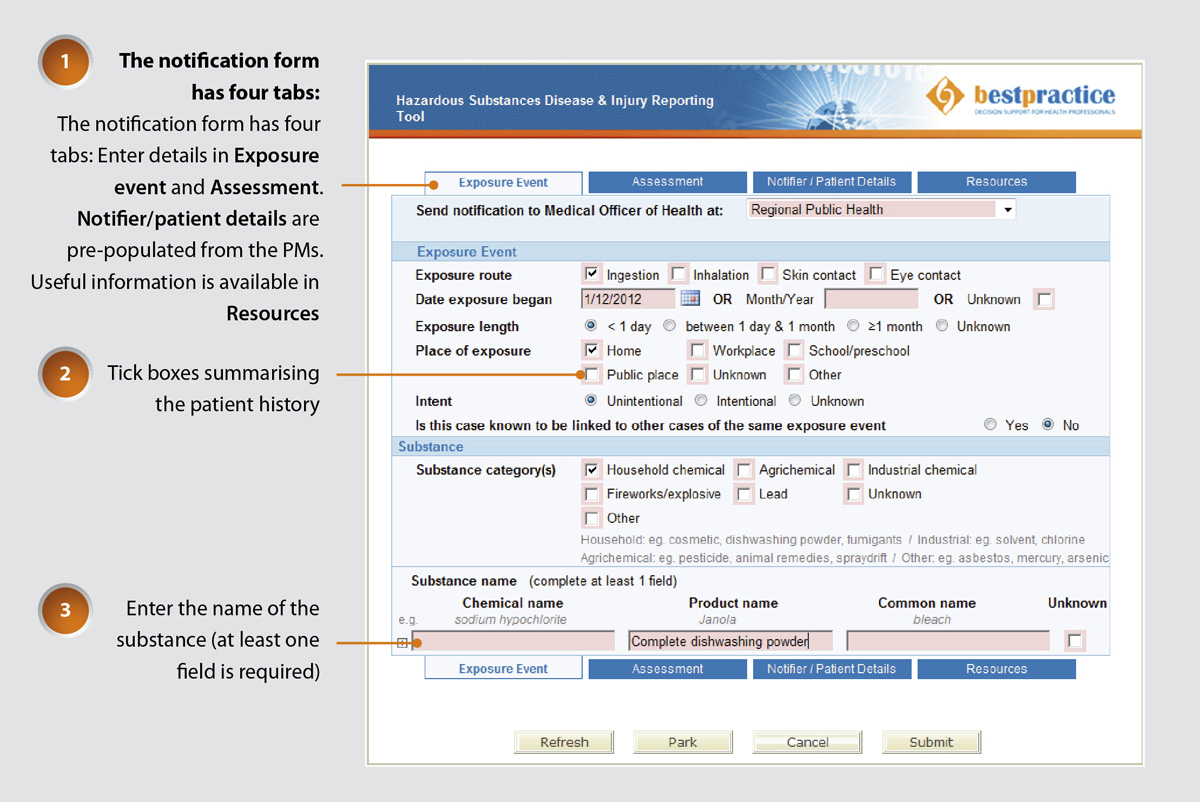 View / Download pdf version of this article
View / Download pdf version of this article
Hazardous substances disease and injury notifications
An electronic notification system has been designed for general practices to report cases of disease and injury related
to exposure to hazardous substances, including lead absorption. It was developed by bestpractice
Decision Support (BPAC
Inc) and the Centre for Public Health Research, Massey University and is funded by the Ministry of Health.
The notification system was introduced progressively throughout New Zealand in 2013. There were 244 notifications in
2013 and 229 in 2014. Of these, 180 and 130 were for lead absorption in 2013 and 2014 respectively.
What is defined as a hazardous substance injury or disease?
A hazardous substance is anything that can explode, catch fire, oxidise, corrode or be toxic to humans, as defined in
the Hazardous Substances and New Organisms Act 1996. The Act requires medical practitioners to notify cases of injury
or disease caused by exposure to a hazardous substance to the Medical Officer of Health.
There are a multitude of possibilities of exposure to hazardous substances, such as: ingestion of cleaning products
or cosmetics by children, overdose with agrichemicals, illness caused by exposure to solvents or chlorine, contact dermatitis
due to chemicals, a fireworks burn or eye injury and “huffing’ (inhaling) of butane.
How should a case be notified?
Look for the “Hazardous Substances and Lead notifications” module on the bestpractice Decision Support dashboard (see
Figure 1 for an example). Submitting the form will send it to your local Medical Officer of Health via a secure system.
If your practice does not currently have access to this electronic form, contact your local Public Health Unit to notify
them of a case.
Lead notifications
Cases of lead exposure including occupational and non-occupational, in which a patient has a blood lead level of ≥0.48
µmol/L, are required to be notified. The electronic form can be used for these notifications.
Poisoning from chemical contamination of the environment
Cases of poisoning arising from chemical contamination of the environment (e.g. from carbon monoxide, agrichemical spraydrift)
are also required to be notified under the Health Act 1956, and this can be done via the electronic form.
Why notify?
The Medical Officer of Health and Public Health Unit staff will assess the information about the exposure and determine
if further follow-up with the patient is required.
Primary care notifications allow identification of substances which are causing harm, and can lead to controls being
put in place to prevent disease or injury. For example, exposure to lead from deteriorating lead-based paint can be reduced
through a range of remedial actions. Some controls may be regulatory; for example, the sale of highly alkaline dishwashing
powders was prohibited in 2007 following increased reports of oesophageal and upper airway injuries in children who ingested
this powder.
For further information about reporting exposures to hazardous substances, contact your local Public Health Unit, or
for more information about the e-notification tool, contact:
Fei Xu
[email protected]
0800 588 265
Helene Marsters
[email protected]
04 979 3382
Figure 1: (click to enlarge)
Example of the Exposure Event tab of the notification form – ingestion of dishwashing powder
